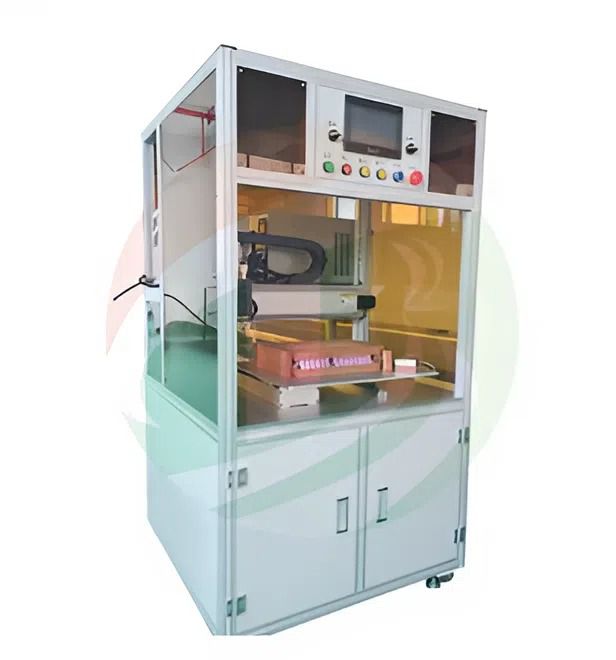Battery Welding Machine
Standard English Translation and Structural Reformatting: How to Precisely Adjust a Battery Welding Machine for Thick Materials
Are you looking for a way to precisely weld thick materials using a battery welding machine but aren't sure where to start? Proper adjustment not only optimizes the quality of the weld joint but also saves time and costs while extending the machine's lifespan. This article will thoroughly analyze effective techniques for adjusting the equipment so you can confidently process thick materials and enhance your work efficiency.
Why Correct Adjustment is Crucial for Thick Materials
Battery welding machines are widely used in various industries for manufacturing batteries and electronic components. However, when working with thick materials, incorrect machine adjustment can result in weak weld joints or even cause defects like cracking, piercing, or material deformation. Therefore, it's essential to understand each parameter on the battery welding machine and know how to apply them appropriately based on the characteristics of the material you are working with.

How to Adjust a Battery Welding Machine for Thick Materials
1. Adjusting Current and Power
The welding current is a key factor that directly affects the depth and strength of the weld. For thick materials, you must increase the current to a level sufficient to ensure the welding energy penetrates deep through the material layer without burning or deforming the surface.
The TOB-850B-8000A Battery Welding Machine has a wide adjustable current range, up to a maximum of 8000A, making it suitable for thick materials requiring high heat energy for deep penetration welding.
Start by setting the current at a moderately high level, test the weld, and then fine-tune it until the joint meets the required strength and surface finish.
2. Welding Speed and Welding Time
Welding too quickly won't allow enough time for heat to penetrate the material, resulting in a weak or open weld joint. Conversely, welding too slowly can over-concentrate the heat, causing workpiece deformation.
When welding thick materials, you should reduce the welding speed and increase the duration of impact at each weld point.
This should be combined with a high current to ensure optimal penetration depth. Adjusting the welding speed is key to achieving a better weld for thick materials.
3. Adjusting Focus and Electrode Angle
Adjust the laser focus or the welding electrode tip to precisely concentrate the energy onto the welding location. With thick materials, this is critical for achieving high heat density and reducing heat loss to surrounding areas.
In practical application, you can set the focus to concentrate on the inner surface or middle of the joint to ensure the heat penetrates throughout the weld, preventing a shallow surface weld.
The electrode angle should also be adjusted appropriately, typically 70-80 degrees relative to the surface, to stabilize the welding arc and prevent dangerous spattering.
4. Duty Cycle and Cooling System
Battery welding machines have a limited duty cycle due to the battery energy source and heat dissipation capability. When working with thick materials, you need to ensure the machine has a sufficiently long duty cycle and an effective cooling system to prevent overheating, which reduces the machine's lifespan and the weld quality.
Consider the TOB-DH-10000 Battery Welding Machine, which features an intelligent cooling system to maintain stable machine temperature, thereby increasing the duty cycle for continuous operation during thick material welding.
5. Material Preparation and Cleaning Before Welding
To ensure a standard weld, you must clean the material surface of grease, oxidation, or dirt. Furthermore, preparing a flat surface with good contact helps the battery welding machine operate more efficiently, reduces energy consumption, and avoids weld defects.
This is especially important when welding thick materials, as poor contact will reduce heat transfer capability and result in a weak weld.
6. Selecting the Appropriate Machine Type for the Material
A maximum power of 8000A is suitable for welding thick materials up to 6-8 mm, typically for welding lithium-ion battery tabs or thick metal casings, ensuring a penetrating, strong weld without damaging the battery structure.
The TOB-DH-10000 machine, with a peak power of 10000A and a long duty cycle, is suitable for large orders involving very thick materials 8 mm and above.
To precisely adjust a battery welding machine for thick materials, you need to focus on factors such as the appropriate current, welding speed, weld focus, cooling system, and material preparation. Understanding and correctly applying these parameters will help you create durable, aesthetically pleasing, and safe weld joints.
-
-
-
-
-
-
-
-
-
-
-
-
-
-
-
-
-
-
-
-
-
-
-
-
